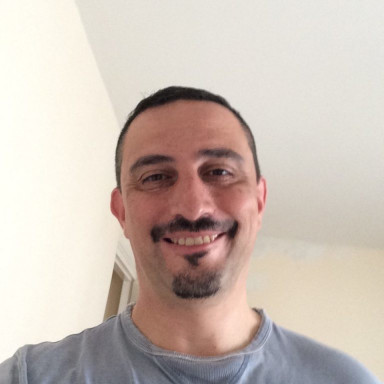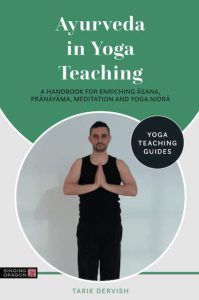Asana and Ayurveda with Tarik Dervish
Report by Judith Lynch

Tarik Dervish, an expert on Ayurveda, presented a clear and thorough workshop to 20 people in a 2-hour session. The first hour was a very informative explanation of this ancient philosophy/healing system, its links to yoga and its practical applications. In the second hour Tarik led a yoga practice designed to be suitable for the winter and for freeing the body of increased vata tendencies.
Ayurveda means life knowledge. Tariq explained that this ancient healing system originated in the Indian sub continent but is also close to the ancient Chinese system. It is believed to have come from divine origins but has practical applications, giving guidance on everyday life regarding sleep, diet, treatments. Yoga and meditation fit in as a sub branch of the yoga Vedas , especially focussing on the philosophy and spiritual dimensions. It aligns closely with yoga therapy in that it is about individuals knowing their individual needs/limitations by improving their relationship with food, movement, what they do, contacts with other people and with their environment. In yoga this links to the concept of “agni” which boosts metabolic power and thereby overall wellbeing.
Tarik then talked about the ancient elements. This led into an explanation of the 3 doshas – vata, pitta and kapha, their characteristics and how these reflect our elemental natures. He suggested suitable yoga content, speed and approaches for practice to fit in with our predominant dosha. Also to assess whether the style of your class suits you by taking time to reflect on whether you feel better afterwards i.e. did the yoga class serve you.
Everyone has inclinations towards particular doshas. However Yoga relates closely to vata as it manages movement versus stagnation, plus the brain, the mind and the nervous system. Vata also increases with age. For teachers with younger students/mixed age profile a few some more dynamic postures may need to be planned. Also it might depend on the time of the day or year eg classes in the morning or in warmer weather may need to include some stronger asanas.
Tarik suggested an asana practice to manage increased vata should be slow and calming, featuring a good warm- up and a focus on freeing up joints and improving spinal flexibility. The practice we enjoyed focussed particularly on freeing up vata in the spine, the colon and the hip joints.
The session started with deeper abdominal breathing, and a thorough warm-up for the whole body. There was a slow build-up of movements to mobilise the spine, open up the hips and enhance deeper breathing into the ribcage area. I found practising more than one movement in the warm-up to free up each area very interesting and helpful, especially from a teacher’s point of view. We returned to Tadasana between standing postures in the traditional manner. This helped with calming; settling the nervous system, flowing prana and allowing time to rest and realign the body between postures. The flowing sequences of postures and the balance helped to improve circulation and concentration, both of which can be a problem aused by increased vata. Squatting to raised heels asana, though challenging, was helpful to improve digestion.
The morning’s activity was rounded off with a soothing and calming relaxation. We benefitted from a lovely beach visualisation and then finished with a moment to observe ourselves and reflect on whether the yoga practice had served us well.
I think the whole workshop served us well – whether teachers or yoga enthusiasts. One participant said:
“I really enjoyed it and found it fascinating. He has so much knowledge on this topic!”
Many thanks are due to Tarik for a well-planned, interesting and enjoyable morning. Thank you to all those attended, especially to those who were brave enough to ask questions. Thanks to the CYTA Committee for organising the event.
Further reading

Tarik Dervish “Ayurveda in Yoga Teaching”
David Frawley “Yoga and ayurveda: self-healing and self-realization”
